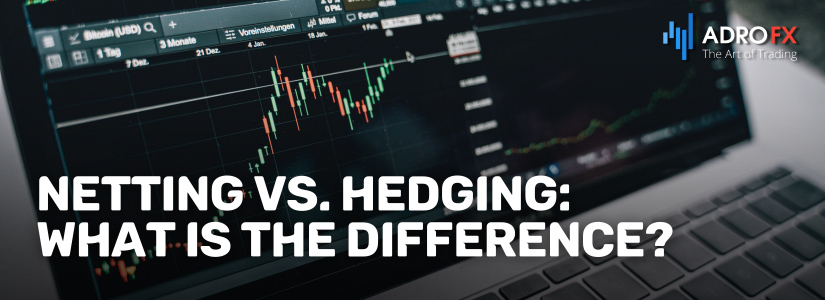Netting vs. Hedging: What Is the Difference?

Financial risk management is a critical aspect of any business strategy, helping organizations mitigate potential losses due to market volatility, currency fluctuations, interest rate changes, and other financial uncertainties. Among the various tools and strategies available for managing risk, netting and hedging are two fundamental techniques. Despite their importance, these concepts are often misunderstood or used interchangeably.
Understanding the differences between netting and hedging is essential for effective financial management. Netting focuses on reducing the number of transactions and consolidating them to minimize risk and streamline operations. In contrast, hedging aims to protect against specific risks by using financial instruments to offset potential losses.
This article aims to demystify these two concepts by exploring their definitions, types, practical applications, and the benefits and drawbacks associated with each. By the end of this article, readers will have a clearer understanding of when and how to use netting and hedging to enhance their financial risk management strategies.
Understanding Netting
Netting is a financial strategy designed to offset the value of multiple positions or payments, resulting in a reduced net exposure. This process involves consolidating various financial obligations into a single, net obligation, thereby minimizing the number of transactions and the associated risks. Netting is commonly utilized in various financial markets, including derivatives, foreign exchange, and intercompany transactions.
Types of Netting
Bilateral netting occurs when two parties agree to offset their mutual obligations, resulting in a net amount that one party owes to the other after balancing the receivables and payables between them. On the other hand, multilateral netting involves multiple parties with mutual obligations. Here, a central clearinghouse or netting system calculates the net amount each party owes or is owed, simplifying the settlement process for all participants.
In the derivatives market, netting is often used to offset positions in futures contracts. For instance, if a trader holds multiple contracts with both gains and losses, netting helps consolidate these into a single net position. In foreign exchange, companies with multiple currency exposures can use netting to offset receivables and payables in different currencies, thereby reducing their overall currency risk. Additionally, multinational corporations with subsidiaries in different countries often employ netting to streamline intercompany transactions, cutting down the number of cross-border payments and associated costs.
Benefits and Drawbacks of Netting
Netting offers several benefits, including risk reduction by consolidating multiple transactions into a single net position, which lowers overall exposure to counterparty risk. It also promotes cost efficiency by significantly reducing transaction costs by minimizing the number of settlements required. Moreover, netting simplifies the management of multiple financial positions and transactions, making it easier to monitor and control risks.
However, netting can also present drawbacks. Implementing netting agreements, especially multilateral netting, can be complex and may require sophisticated systems and processes. Additionally, netting arrangements must adhere to regulatory and legal requirements, which can vary by jurisdiction and add to the complexity. Furthermore, differences in the interpretation of netting agreements can lead to disputes between parties, particularly during times of financial stress.
Understanding netting and its applications can help businesses and investors manage their financial obligations more effectively, reducing risks and improving operational efficiency.

Understanding Hedging
Hedging is a financial strategy used to protect against potential losses from adverse price movements in an asset. By taking an offsetting position in a related security or financial instrument, hedging aims to mitigate the risk of price volatility. This technique is commonly employed by investors, businesses, and financial institutions to safeguard their portfolios or business operations against unforeseen market fluctuations.
Types of Hedging Instruments
A variety of financial instruments serve hedging purposes. Futures contracts, for instance, involve agreements to buy or sell an asset at a predetermined price on a specified future date. They are commonly utilized to hedge against price fluctuations in commodities, currencies, and financial indices. Options represent another prevalent hedging tool, granting the holder the right (but not the obligation) to buy or sell an asset at a specified price within a defined timeframe. Options are effective for hedging against adverse price movements while retaining potential for gains. Swaps, on the other hand, are agreements between two parties to exchange cash flows or other financial instruments, used to hedge against risks such as interest rate fluctuations, currency exchange rate risks, or other financial exposures.
The strategies for hedging can vary widely based on the specific risks being managed. For example, a farmer may employ futures contracts to secure the price of a crop ahead of harvest, thereby safeguarding against the risk of price declines. Similarly, a corporation with substantial foreign revenue might utilize currency options to hedge against exchange rate fluctuations, ensuring stability in the value of their overseas earnings. In contrast, an investor with a diversified stock portfolio might turn to put options to hedge against potential downturns in the market, thereby limiting potential losses if market conditions worsen.
Benefits and Drawbacks of Hedging
Hedging provides several significant advantages, primarily by mitigating risks and ensuring financial stability. By hedging potential losses, businesses and investors can shield themselves from adverse movements in the market, thereby promoting more predictable financial outcomes. This stability proves especially beneficial for entities exposed to volatile markets, such as commodities or foreign currencies.
However, hedging does come with its drawbacks. It can be costly, involving fees, premiums, or other expenses associated with the instruments used for hedging. Moreover, while hedging protects against losses, it can also restrict potential gains. For instance, investors hedging a stock position may forego profits if the stock price rises substantially. Additionally, the complexity of some hedging strategies necessitates sophisticated financial knowledge and expertise for effective implementation.
In conclusion, hedging stands as a potent risk management tool that empowers businesses and investors to mitigate financial uncertainties. By comprehending the diverse instruments and strategies available, and carefully weighing their respective benefits and drawbacks, individuals and organizations can make well-informed decisions to safeguard their financial interests.
Also read: How To Efficiently Diversify A Currency Trading Portfolio
Key Differences Between Netting and Hedging
Netting and hedging serve distinct purposes in financial risk management.
Netting's Purpose and Goals
Netting aims to consolidate multiple financial obligations into a single net position, reducing transaction volumes and minimizing exposure to counterparty risk. It enhances operational efficiency and financial effectiveness by streamlining processes.
Mechanisms and Processes of Netting
Netting operates by offsetting receivables and payables between parties, resulting in a net amount owed or received. It can involve bilateral netting, where two parties offset obligations, or multilateral netting, managed through a central clearinghouse.
Financial Instruments
Involved in Netting Netting primarily consolidates receivables and payables, facilitated by agreements and clearinghouses.
Risk Management Outcomes of Netting
Netting reduces counterparty risk and operational complexity, consolidating transactions into a simplified financial position. This promotes financial efficiency and decreases transaction costs.
Hedging's Purpose and Goals
Hedging aims to protect against specific risks associated with adverse price movements in assets. It mitigates potential losses by taking offsetting positions in related securities or financial instruments.
Mechanisms and Processes of Hedging
Hedging involves taking positions in financial instruments like futures, options, or swaps to offset potential losses in underlying assets. This includes identifying risk exposure, selecting appropriate instruments, and executing hedges for risk mitigation.
Financial Instruments Involved in Hedging
Hedging uses futures contracts, options, and swaps to manage risk exposures such as price volatility, interest rate changes, or currency fluctuations.
Risk Management Outcomes of Hedging
Hedging shields against specific risks by offsetting potential losses with gains from hedging instruments. While it limits downside risk, it may constrain potential gains, ensuring more predictable financial outcomes.
Also read: Portfolio Diversification: What It Is And How To Apply It

When to Use Netting
Netting is particularly beneficial in scenarios involving multiple financial obligations between parties. It is ideal for situations where reducing transaction volume and counterparty risk is critical. For instance, companies engaged in frequent foreign exchange transactions can streamline settlements and minimize currency exposure through netting. This technique is widely used in the financial sector, especially in derivatives and foreign exchange markets. Multinational corporations with extensive intercompany transactions also find netting advantageous, as it helps manage cross-border payments and reduce transaction costs. In the derivatives market, netting offsets positions in futures contracts, consolidating gains and losses into a single net position. Similarly, companies with multiple currency exposures can net receivables and payables in different currencies to minimize overall currency risk. Multinational corporations often rely on netting to streamline intercompany transactions, thereby reducing the number of cross-border payments and associated costs.
When to Use Hedging
Hedging is beneficial in scenarios where there is significant exposure to price volatility, currency fluctuations, or interest rate changes. It is particularly useful when there is a need to protect against potential losses from adverse market movements. For example, a company with substantial foreign revenue might use hedging to protect against currency risk, ensuring stable earnings despite exchange rate fluctuations. Hedging is commonly employed in industries with high exposure to market risks, such as agriculture, energy, and finance. Farmers often use hedging to lock in prices for their crops, safeguarding against price drops. Energy companies hedge against fluctuations in oil and gas prices, while financial institutions hedge against interest rate changes and currency risks. In practice, a farmer might use futures contracts to secure the price of a crop before harvest, protecting against price drops. An airline company could use fuel hedging to lock in fuel prices and protect against rising costs. An investor with a diversified stock portfolio might employ options to hedge against potential market downturns, limiting losses while maintaining the potential for gains.
Illustrative Applications: Real-World Scenarios of Netting and Hedging
In practical applications, netting and hedging have emerged as highly effective strategies for managing risks across diverse industries.
For instance, in the banking sector, netting is crucial for managing large volumes of foreign exchange transactions. Consider a scenario where Bank A owes Bank B $10 million in USD, while Bank B owes Bank A $8 million in EUR. Through netting, these obligations can be offset, resulting in a single payment of $2 million from Bank A to Bank B. This consolidation reduces transaction numbers, minimizes operational risks, and cuts transaction costs. Similarly, multinational corporations use netting to streamline intercompany transactions. For example, a global manufacturing firm with subsidiaries worldwide can consolidate payments, minimizing cross-border transactions and reducing foreign exchange risks and banking expenses.
In contrast, hedging plays a pivotal role in managing specific financial risks. In the airline industry, fuel price volatility poses a significant challenge. Airlines, like Southwest Airlines, use fuel hedging contracts to stabilize costs. By locking in future fuel prices using futures contracts, airlines can shield themselves from price spikes, ensuring profitability amid volatile fuel markets. Likewise, farmers employ hedging to mitigate price fluctuations in agricultural commodities like wheat. By entering into futures contracts, farmers secure stable incomes despite market price variations during harvest times. Financial institutions also utilize hedging, such as interest rate swaps, to manage interest rate exposures effectively. For instance, a bank with substantial floating-rate debt might swap its floating-rate payments for fixed-rate payments, thereby stabilizing its interest expenses.
A comparative analysis of these strategies underscores their distinct roles in risk management. Netting focuses on consolidating transactions to streamline operations and reduce counterparty risks, particularly effective in environments with frequent transactions between parties. Conversely, hedging aims to mitigate specific financial risks, such as volatility in asset prices, through offsetting positions in financial instruments. While netting enhances operational efficiency and lowers counterparty risks, hedging safeguards against adverse market movements, ensuring more predictable financial outcomes.
Enhance your financial risk management strategies by understanding the distinctions between netting and hedging. Ready to apply these concepts in real-time trading? Open a trading account with AdroFx and start navigating the markets with confidence. Register Here to begin your journey!
Conclusion
In summary, netting and hedging are indispensable strategies in risk management, each tailored to address unique challenges. Netting simplifies financial operations by consolidating transactions, thereby reducing risks and costs, ideal for industries with extensive transaction volumes. Hedging, meanwhile, protects against specific financial risks using instruments like futures, options, and swaps, catering to uncertainties in asset prices, interest rates, and currencies.
Effective risk management hinges on understanding these strategies' nuances and deploying them judiciously based on specific organizational needs and market dynamics. By doing so, businesses and investors can fortify their financial stability and navigate uncertain market conditions with greater confidence.
About AdroFx
Established in 2018, AdroFx is known for its high technology and its ability to deliver high-quality brokerage services in more than 200 countries around the world. AdroFx makes every effort to keep its customers satisfied and to meet all the trading needs of any trader. With the five types of trading accounts, we have all it takes to fit any traders` needs and styles. The company provides access to 115+ trading instruments, including currencies, metals, stocks, and cryptocurrencies, which make it possible to make the most out of trading on the financial markets. Considering all the above, AdroFx is the perfect variant for anyone who doesn't settle for less than the best.










